
Five disturbing facts about loudspeakers no other manufacturer has the guts to tell you.
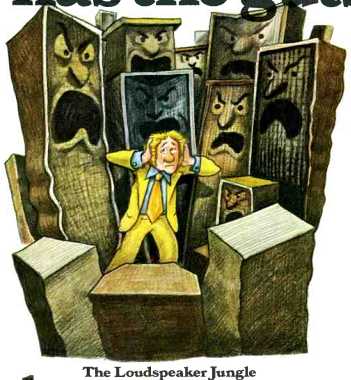
The Loudspeaker Jungle
1. There are approximately one hundred different makes of "high fidelity" speakers sold in the United States, confronting the buyer with an incredible clutter of names, types, claims and counterclaims.
Of the hundred, no more than twenty are relevant, in the sense that they represent some sort of serious engineering effort and manufacturing philosophy, whether successful or not.
The remaining eighty are opportunistic marketing ventures, big and small, responding to the merchandising needs of stores rather than to the listening needs of the public.
2. One reason for this commercial jungle is that anyone with no other qualifications than a few thousand dollars can go into the speaker business.
About nine out of ten speaker manufacturers, the good guys as well as the bad guys, buy their drivers ( woofers, tweeters, etc.) from outside suppliers in the U.S., Europe and Japan.
There are only a handful of these "raw speaker" houses and they stand ready to make anything their customers specify, from the most sophisticated drivers to the cheapest, a hundred thousand units or just five hundred.
The typical speaker manufacturer is therefore merely a contractor with practically no overhead; he throws a Gundersen woofer and a Furuhashi tweeter into a Gonzalez cabinet and sells it as the one and only original Astrodynamic speaker system. ( The names have been altered to protect the innocent.) There's nothing inherently wrong with this way of making speakers, as long as a talented and experienced speaker designer is in charge from beginning to end.
At Rectilinear, we buy our drivers only from the best suppliers, who make them to our own rigid specifications to match the system designs we've developed. We make our own crossover networks and cabinets.
But not every manufacturer is like us.
3. Among the approximately twenty technologically and ethically respectable speaker brands, some six or seven are relevant only to a small coterie of dedicated audiophiles.
These are the exotic designs, utilizing electrostatic or other unconventional drive principles as well as diaphragms of unfamiliar shape and construction.
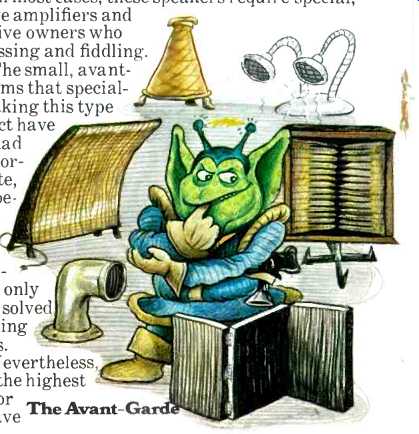
--------The Avant-Garde
In most cases, these speakers require special, expensive amplifiers and compulsive owners who enjoy fussing and fiddling.
The small, avant-garde firms that specialize in making this type of product have always had a high mortality rate, usually because of wishful thinking about un-solved or only partially solved engineering problems.
Nevertheless, we have the highest regard for experimenters and consider it entirely possible that the future belongs to one of them.
But which one?
( Will you buy the first electric automobile when it comes out?

----The West Coast Sound
4. The thirteen or fourteen speaker makers who are both serious and reasonably conservative, and among whom we confidently number ourselves, are hopelessly split on the issues of sound dispersion and speaker "personality."
Some believe, and so far we're one of them, that a speaker should radiate sound only forward, over as wide an angle as possible. Others aim various drivers at the back wall or the ceiling, to bounce off the sound before it reaches the listener.
We feel that the arguments for the latter approach are unscientific and that the resulting sound is phony. No guitar is nine feet tall and twelve feet wide. ( When somebody comes up with a reflective design that presents a correct spatial perspective, we may change our mind. ) As for personality or character, a speaker should theoretically have none, since it's a reproducer, not a musical instrument. When two speakers sound different playing the same program material, at least one of them is wrong. Maybe both.
But they do sound different, even in this heavily screened group.
There's the West Coast sound, for example, favored mainly by California-based firms and characterized by sizzling highs, a huge bass and lots of so-called presence. Everything a bit overstated and larger than life.
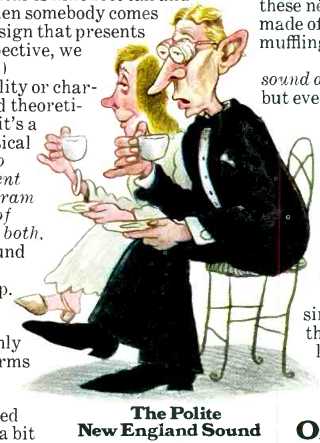
-------------The Polite New England Sound
There's also the polite New England sound, with its origins in the Boston area. Nice and smooth, neutral, everything in its place, nothing shrill, but somehow muffled and less vivid than real life.
We believe that, despite their charms, both of these personalities are wrong. Only a totally characterless accuracy is right. What goes in must come out, no more and no less. Let the record producer create the type of sound you hear, not the speaker manufacturer.
Accuracy has a great deal to do with low time delay distortion, a much-neglected subject.
Electrostatic speakers excel in this area.
We could summarize our position by stating that Rectilinear aims for the accurate, electrostatic type of sound without giving you the problems associated with electrostatics.
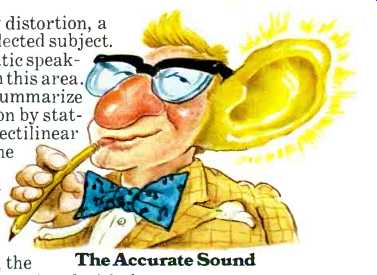
----------The Accurate Sound
5. There's also a new impediment to accurate sound reproduction, in addition to the established schisms discussed above. We're referring to the epidemic of "three-dimensional" or "sculptured" speaker grilles made of polyfoam.
A speaker grille should be, above all things, acoustically transparent. There should be no audible, and virtually no measurable, difference in the output of the speaker with the grille on or off.
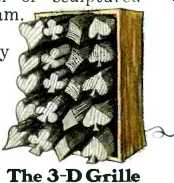
------------The 3-D Grille
But the foam material these newfangled grilles are made of is the same as the appliance people use for muffling the mechanical noises of air conditioners ! How a reputable manufacturer can use a sound deadener for a speaker grille is beyond us, but everybody seems to be doing it.
Until acoustically transparent three-dimensional materials become available, our grilles will remain prosaically two-dimensional.
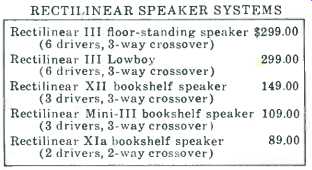
----------RECTILINEAR SPEAKER SYSTEMS
So. Okay.
Besides Rectilinear, are there any sincere, serious, non-exotic speaker companies that make forward-radiating, personality--less, accurate-sounding systems without 3-D grilles? We don't know of any.
In our own methodical way, we're unique.
One more thing.
We aren't telling you all this just for laughs.
Next time you're in a hi-fi store, use these five facts to guide you through the loudspeaker jungle.
And remember who told you.
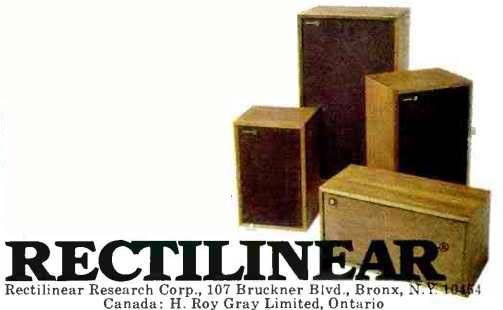
Rectilinear Research Corp., 107 Bruckner Blvd., Bronx, NY; Canada: H. Roy Gray Limited, Ontario
(adapted from Audio magazine, Oct. 1973)
Also see:
Rectilinear XIa Loudspeaker System (Equip. Profile, Aug. 1973)
Rectilinear Research Corp. loudspeakers (Dec. 1973)
= = = =